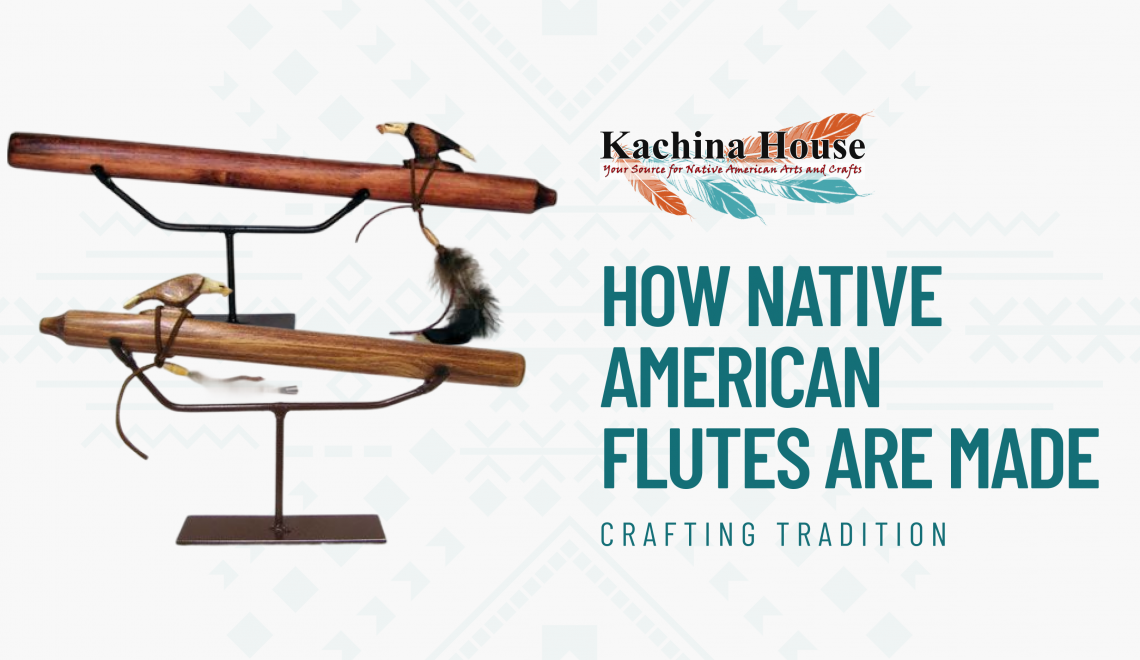
The soft, soulful sound of a Native American flute is something many people recognize, even if they don’t know much about the instrument itself. You’ve probably heard it in calming music, documentaries, or even during a visit to a cultural center. That peaceful tone comes from a long tradition of skill, design, and purpose.
In this article, we’ll explore how our Native American flutes are made, walk through the key steps in the crafting process, and explain what makes them unique.
A Brief History of the Native American Flute
The Native American flute is believed to be one of the oldest musical instruments in North America, dating back thousands of years. While the exact origins are unknown, archaeologists have discovered ancient flutes and bone whistles as early as 800 A.D. These early versions were likely rim-blown, which means the player blew across the top rather than into a mouthpiece. Many of these instruments, especially those made from wood, didn’t survive over time, but their influence remains.
Early flutes were often referred to as Anasazi flutes, named after the ancient people who once lived in the Southwestern United States. They were challenging to play and required more advanced technique. Around the 1800s, a more accessible version of the flute began to appear, known today as the Plains style flute. This version introduced a duct or channel to help guide airflow, which makes it easier to produce sound and play melodies.
The Plains style flute is the one most people recognize today. It’s commonly made from cedar, pine, or similar soft wood and is used in ceremonies, courtship, healing, and storytelling. Across various tribes, flutes have played a role in dances and rituals, such as the Hopi Flute Ceremony, held every other August to honor rain and fertility.
What Are the Main Steps in Crafting a Native American Flute?
@pinewoodenflutes Any suggestions on how we can put these up online legally. We aren’t sure what works and what doesn’t. Any help is greatly appreciated. #fyp ♬ Lost – Autumn’s Grey Solace
You need time, patience, and a good understanding of both materials and sound to make a Native American flute. There are different styles that reflect the traditions, woods, and tunings used by various Native artisans. You can check products in the Native American flute collection at Kachina House to see handcrafted options.
While every flute maker may add their personal touch, the process generally follows these steps.
-
Choose the Wood
It starts with selecting the right piece of wood. Pine is one of the most commonly used materials because of its lightweight nature, workability, and warm tone. Other woods like cedar, walnut, maple, and cherry are also popular choices, which depend on the desired sound and appearance.
-
Cut and Split
The wood is typically cut into two halves lengthwise. This allows the maker to carve out the inside of the flute more accurately before gluing the pieces back together.
-
Hollow the Bore
Each half is carved to create the bore (the inner chamber where the air flows). Precision is key. If the bore isn’t even or smooth, the flute may not produce a consistent tone. The size and shape of the bore also influence the pitch and sound quality.
-
Create the Air Channel and True Sound Hole
The mouthpiece end of the flute includes an air chamber. A small air channel directs the player’s breath into a “true sound hole.” This is where the magic happens, the air splits and vibrates, which produces that signature flute sound.
-
Tune and Voice Flute
Once assembled, the flute is tuned by adjusting the length and size of the finger holes. Makers carefully shape and space each hole to produce specific notes. This process may involve testing the sound over and over, making small adjustments until it’s just right.
-
Finish the Flute
After tuning, the flute is sanded smooth and sealed. Natural oils or non-toxic finishes are usually applied to protect the wood while maintaining its resonance. Many makers also add hand-carved designs, beadwork, feathers, gemstones or paint to personalize the flute and honor tribal aesthetics.
What Makes a Native American Flute Different from Other Types of Flutes?
The Native American flute is unique not only in sound. Unlike many flutes that are played horizontally (like concert flutes), the Native American flute is played vertically, similar to a recorder. It’s also a two-chambered instrument, which means it has a separate air chamber and sound chamber. This helps produce its distinctive, breathy tone.
Most are tuned to a five-note minor pentatonic scale, which creates a gentle, emotional sound. This simplicity allows even beginners to play beautiful melodies right away, while skilled players can create intricate, expressive music.
Beyond the physical differences, the flute holds cultural and spiritual value. It has traditionally been used in healing, meditation, storytelling, and courtship. The flute was a voice, often believed to carry prayers and emotions directly to the natural world.
Final Thoughts
The Native American flute connects sound with tradition, shaped by skill and passed down through generations. Every step in the process, from choosing the wood to shaping and tuning the flute, carries meaning rooted in heritage and purpose. These instruments reflect care, intention, and a deep respect for the past.
Curious to experience one for yourself? Visit Kachina House and select a handcrafted Native American flute that fits your style and story.

